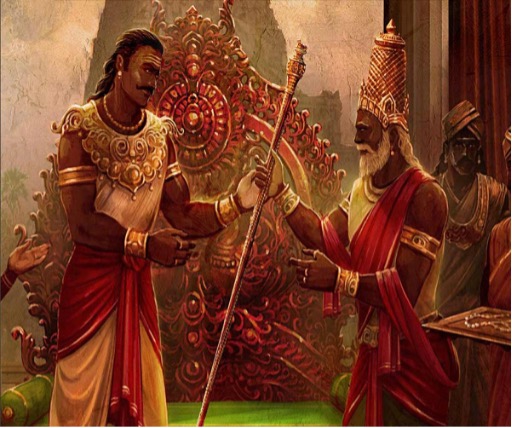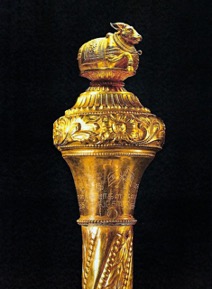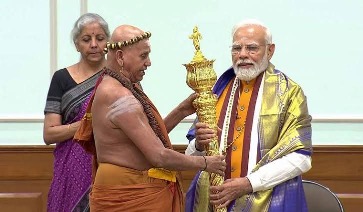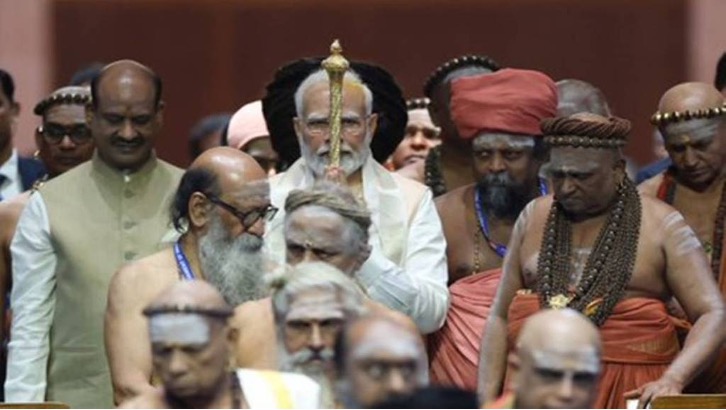Although India gained its independence way back in 1947, it seems like everyone but India has moved on from it. The recent Sengol controversy takes us back to the eve of Independence when the much-talked-about Sengol was handed over to Nehru as a display of power transfer from the British to India. Recently, Union Home Minister, Amit Shah, said that the power transfer was not merely a handshake or signing of a document and that the Sengol represents the same feeling Nehru felt that night.
But what is this Sengol that has taken the country by storm?
History
Sengol is a Tamil word for a sceptre derived from the phrase Semmaiyaana-Kol which roughly translates to ‘baton of perfection’. Initially perceived as the symbol of justice and righteousness, it was to be held by only worthy rulers to remind themselves and their subjects that they wielded power to give absolute justice. Several Chola, Chera, and Pandya kings fulfilled their responsibilities as the Sengol holders. However, these Sengol holders did not meet the standards that the Sengol exacted. Soon, the Sengol’s just and virtuous identity segued into that of power and sovereignty. It was in 1947 when the concept of Sengol came to light again.

During India’s independence Lord Mountbatten, the last Viceroy of India had asked Nehru whether Indians had any ceremonial practices regarding the transfer of power or authority. Reportedly, Rajaji (C Rajagopalachari) recommended the power transfer traditions existing in the medieval Tamil kingdoms to Nehru. There was documented evidence of the existence of this practice in the Sangam era and the Chola period in the medieval era. No sooner were things approved that the Chennai-based jewellers, Vummidi Bangaru Chetty and Sonsin, made a Sengol in 1947. On the eve of independence, the Thiruvavuduthurai Adheenam, one of the oldest Shaivite institutions, officially took the charge of the ceremony by presenting the Sengol to Mountbatten. It was taken back from Lord Mountbatten to be purified with holy water from the river Ganga before handing it over to Nehru at his residence. Later, the Sengol was kept in a museum in Allahabad.
The Sengol Now
PM Modi has now brought the same Sengol back into the picture as he seamlessly incorporated the Sengol into the high-profile inauguration of the New Parliament Building on May 28 2023. He installed the Sengol next to the speaker’s chair and expressed how the Sengol was significant in connecting the glorious traditions of pre-colonial India to future independent India. On the eve of the inauguration day, the priests of Adheenam presented the Sengol to PM Modi at his official residence in New Delhi as they chanted mantras and rendered a special song.

Is there a political connotation attached to the Sengol installation?
For many years, regional parties have governed Southern India unswervingly. The Bharatiya Janata Party (BJP) has found it onerous to acquire power and seats in Southern India. Hence, it seems like the BJP is trying to gain favour by resorting to its strategies of cultural nationalism. For instance, in the whole Sengol controversy, PM Modi has constantly mentioned how Tamil Nadu has always been the focal point of Indian Nationalism in every era of the freedom struggle. He states that bestowing recognition and credit to Tamil Nadu for its role in India’s Independence is long overdue. The BJP also attacked the opposition party by saying that the treatment they had meted out to Tamil Nadu’s traditions was unfortunate while the BJP is trying to bring this issue to the forefront. The Congress party soon added to the salvo by stating that the BJP violated the constitution’s rules and dishonoured the president. They reasoned that the Constitution of India calls for the Head of the State, President Droupadi Murmu, to inaugurate the new parliament building. Congress further claimed that there is no documented evidence of either Lord Mountbatten asking about any ceremonial practices of power transfer or The Adheenams presenting the Sengol to Nehru. Moreover, Congress general secretary, Jairam Ramesh, remarked how a self-glorifying authoritarian Prime Minister with utter disdain for Parliamentary procedures, who rarely attends Parliament or engages in it, will now inaugurate the new Parliament building in 2023.

Amit Shah, Union Home Minister, was quick to slam back by calling the opposition anti-nationalists and a disgrace to Indian society because they do not appreciate Indian culture. While Smriti Irani, Minister of Minority Affairs, accused the Gandhi family of downsizing the Sengol’s worth to a mere walking stick by simply keeping it locked up in a museum. The BJP-led National Democratic Alliance (NDA), too, stated that anyone who boycotted the ceremony was a “blatant affront to democratic ethos and constitutional values of our great nation”. 21 opposition parties further stirred the controversy as they boycotted the inauguration event on the grounds that the president being the Head of the State should inaugurate the event and not the PM. The meat of the matter is that Smriti Irani called the Sengol a symbol of dharma (religion), aastha (faith), and loktantra (democracy). It is no news that the BJP has been a flag bearer of Hindutva where they never let an opportunity to cash in on the religious sentiments of Indians slide by. On observation, one can see that the Sengol has Hindu deities Nandi, the sacred bull of Lord Shiva, on top and Goddess Laxmi at the bottom. It is ironic that such an overtly Hindu sceptre is being kept in a so-called secular parliament while promoting it as a democratic upshot.before being promoted to the Vice
President of Government Affairs, six months before her maiden spaceflight.
The prime question is why India, and more so, the central government is still clinging to religious and tradition-based things. Is a sense of sovereignty attempting to be established by glossing it over with the acts of upholding the Indian tradition? To capitalize on religious beliefs by deeply engaging people in many such fictitious things only to debase the identity of a nation is jeopardizing.
While it’s notable that Indian traditions get promoted, one cannot ignore that a Hindu sceptre that signifies ‘transfer of power’ is being presented to the PM and installed in the Parliament. Will the Sengol bring just and fair governance? Nonetheless, the Modi government looks forward to opening a new chapter of democracy amidst the Sengol controversy.
Written by – Shivaanshi Singh
Edited by – Rucha Naik




